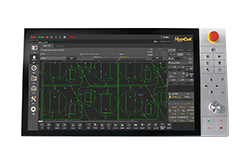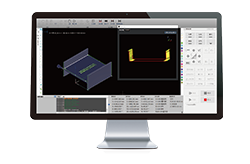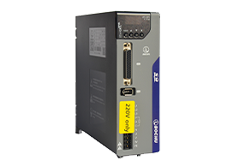-
Products
-
2D Cutting
-
Tube Cutting
-
3D Cutting
-
BLT Intelligent Cutting
-
Industrial Automation
-
Industrial Software
-
-
Portfolio
-
-
2D Cutting Head
Tube Cutting Head
Plane Bevel Cutting Head
Structural Steel Cutting Head
-
BOCHU High-Speed Servo Drive
-
Popular products
-
- Online Store
- Service & Support
- About BOCHU
- Investors Relations

- Software Download
- Manual
- Video
- Tutorial
In TubesT, there are Common Leadlines and Out-of-Board Leadlines(Lead In and Lead Out). Click Lead directly to set Common Leadlines, also you’re allowed to set Lead In and Lead Out in the drop down arrow of it.
Common Leadlines Position
If you checked Lead on Cut-off Section, TubesT will change Start Point position when setting Leadlines on cut-off section; if not, the leadline will be placed at original Start Point position.
The Start Point position of cut-off section is determined by Angle with X Axis, if you set it as 90°, then it will be at the point marked by red circle, if 180°, at the point marked by yellow circle.
If checked Lead on Wrapping Hole, TubesT will change the Start Point of wrapping holes when setting Leadlines; if not, the leadlines will be placed at the position of original Start Point.
Far-end and Near-end are determined by Y coordinates, the point close to tube tail is Far-end as marked by red circle; while the point marked by yellow circle is Near-end.
You can designate the Start Point of rectangular holes by At Long Edge or At Vertex, as shown in the below, the point marked by blue is a Vertex.
Lead In and Lead Out
Lead In and Lead Out are the leadlines which start from out of tube and do not pierce on the tube, always used for Angle Steel and C-shaped steel.
In Display, you can check Highlight Lead Line to turn the leadlines to blue, as shown in the figure below,
If you enabled L/C Steel when importing, the leadlines out-of-board for designated length will be added automatically.
Notes:
If you want to cut from outside the tube as the holes on the angle steel shown below, it is necessary to apply Lead In instead of Common Lead, or the cutting direction may have some problem.
As there is only Common Lead in TubePro, so it is recommended to set it in TubesT first and nest the parts after the leadlines are applied.
In TubesT, there are Common Leadlines and Out-of-Board Leadlines(Lead In and Lead Out). Click Lead directly to set Common Leadlines, also you’re allowed to set Lead In and Lead Out in the drop down arrow of it.
Common Leadlines Position
If you checked Lead on Cut-off Section, TubesT will change Start Point position when setting Leadlines on cut-off section; if not, the leadline will be placed at original Start Point position.
The Start Point position of cut-off section is determined by Angle with X Axis, if you set it as 90°, then it will be at the point marked by red circle, if 180°, at the point marked by yellow circle.
If checked Lead on Wrapping Hole, TubesT will change the Start Point of wrapping holes when setting Leadlines; if not, the leadlines will be placed at the position of original Start Point.
Far-end and Near-end are determined by Y coordinates, the point close to tube tail is Far-end as marked by red circle; while the point marked by yellow circle is Near-end.
You can designate the Start Point of rectangular holes by At Long Edge or At Vertex, as shown in the below, the point marked by blue is a Vertex.
Lead In and Lead Out
Lead In and Lead Out are the leadlines which start from out of tube and do not pierce on the tube, always used for Angle Steel and C-shaped steel.
In Display, you can check Highlight Lead Line to turn the leadlines to blue, as shown in the figure below,
If you enabled L/C Steel when importing, the leadlines out-of-board for designated length will be added automatically.
Notes:
If you want to cut from outside the tube as the holes on the angle steel shown below, it is necessary to apply Lead In instead of Common Lead, or the cutting direction may have some problem.
As there is only Common Lead in TubePro, so it is recommended to set it in TubesT first and nest the parts after the leadlines are applied.
-
Download
-
Contact us
-
Online consultation















